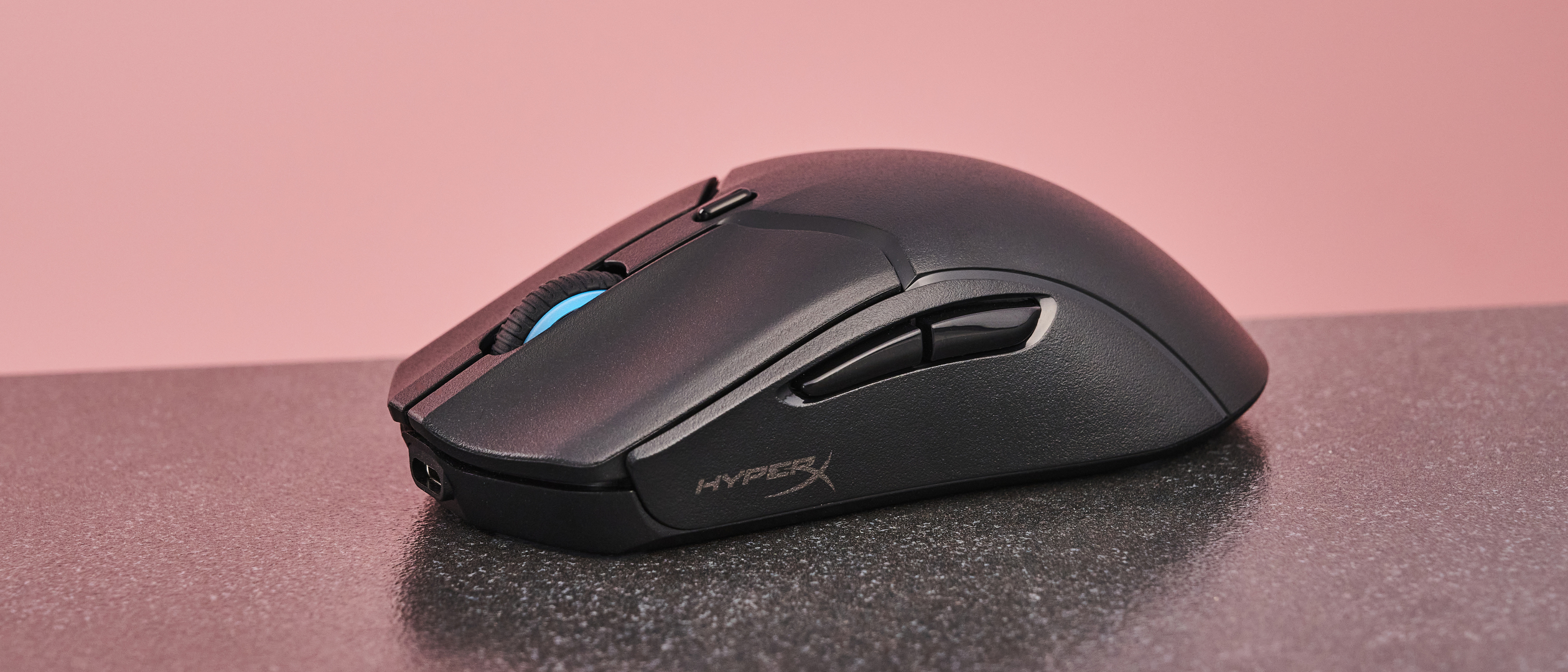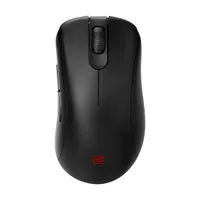TechRadar Verdict
The HyperX Pulsefire Haste 2 Mini feels great in the hand, thanks to its ergonomic design, and the thick PTFE skates offer ultrasmooth gliding on most surfaces. However, there are lighter gaming mice out there, even those with bigger form factors, and the clicks are weightier than you might expect. The polling rate also tops out at 1KHz, which might not be enough for those who aspire to pro-level FPS play.
Pros
- +
Ergonomic design
- +
Multiple connectivity options
Cons
- -
Relatively heavy clicks
- -
Low polling rate
- -
Software limited
Why you can trust TechRadar
HyperX Pulsefire Haste 2 Mini: Two-minute review
The name of the HyperX Pulsefire Haste 2 Mini appears to be a slapdash assortment of buzzwords, but it at least signals its intentions of being a rapid gaming mouse. HyperX claims it’s 16% smaller than the Pulsefire Haste 2, as well as being a few grams lighter (59g rather than 61g).
As with other HyperX peripherals, the HyperX Pulsefire Haste 2 Mini keeps to a minimal aesthetic, with only two small logos present. There is also an RGB light around the rim of the scroll wheel, but again, this is reasonably understated compared to other gaming peripherals. The chassis has a more textured feel than you might expect from a gaming mouse, which should help players maintain their grip when things get sweaty.
This isn’t the lightest mini gaming mouse out there, with numerous other examples managing to keep the grams down to the low 50s. What’s more, the weight doesn’t feel evenly distributed, with most of it appearing to be concentrated around the center, making the Pulsefire Haste 2 Mini feel heavier than it is.
Immediately apparent when you first grip the mouse is the steep rake of the two main buttons. I found this comfortable as it was conducive to the natural bend in my fingers and knuckles – something I can’t say about other compact gaming mice I’ve experienced. Their deep indentations also help to keep your fingers in place, while the concave sides help secure your overall grip on the Pulsefire Haste 2 Mini.
Clicks are more weighted than you might expect compared to some of the best gaming mouse options in this size category, which means rapid firing isn’t as easy to pull off as you might expect, quite ironic given its name. That sloping angle does help to facilitate spamming somewhat, letting you hammer down on the buttons more emphatically, but they’re still not as snappy as I would’ve liked.
The back and forward buttons are quite large for a miniature mouse. They feel firm but are easy to actuate and pleasingly responsive. The scroll wheel is well-notched, and the scroll button offers a secure push for the most part, although I did struggle to actuate it consistently: if you don’t hit the wheel square in the middle, then you’ll encounter a surprising amount of resistance, which can lead to failures in registering your inputs.
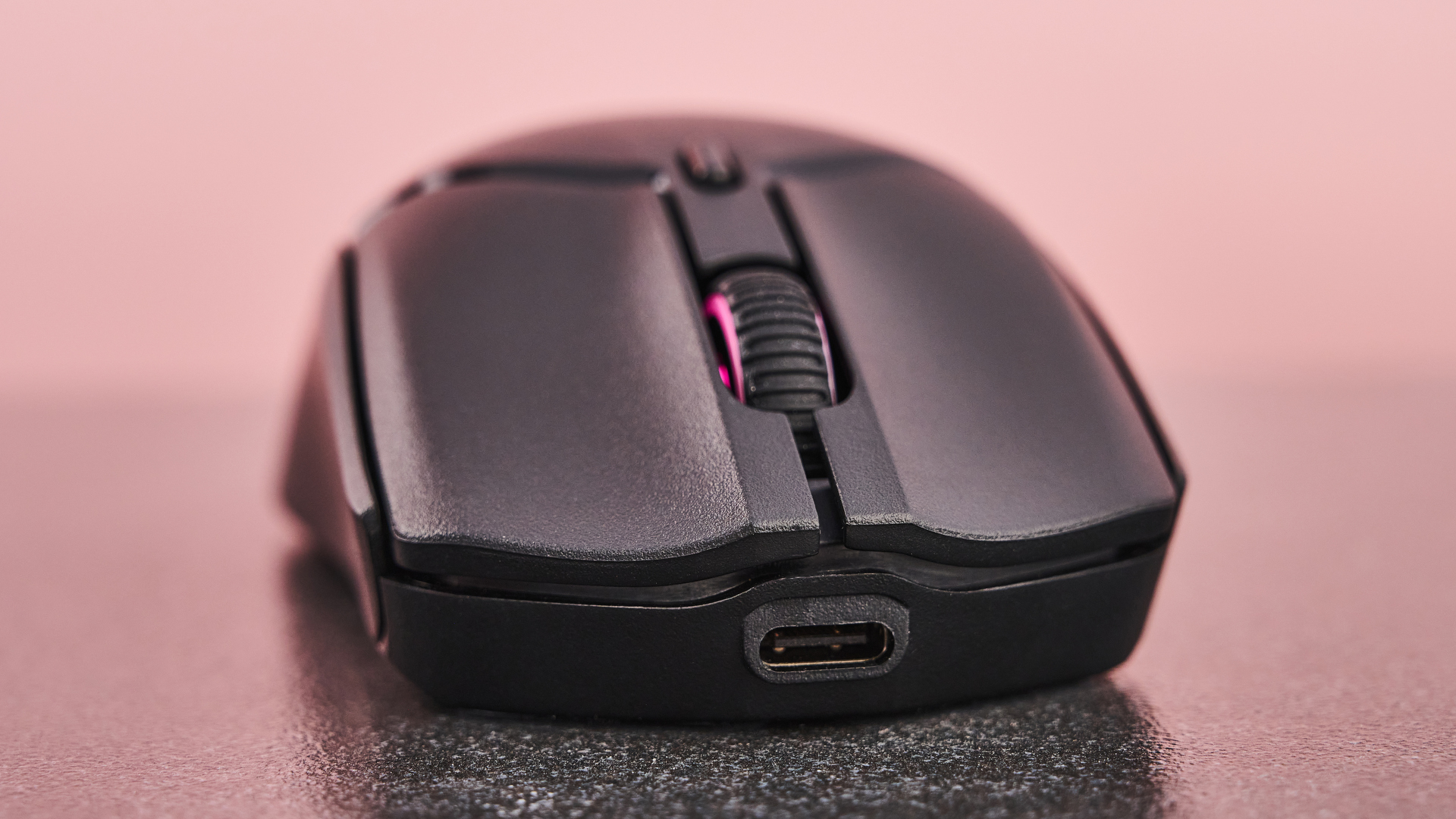
Despite only having four small PTFE skates in each corner and one around the optical sensor, they’re quite thick, which makes the Pulsefire Haste 2 Mini glide smoothly, even over hard surfaces. It’s one of the mouse’s standout features, one that will be sure to please the accuracy-craving FPS sect.
Sign up for breaking news, reviews, opinion, top tech deals, and more.
The DPI button is located on the top and can be used to cycle through up to five predefined settings. It can also be customized to perform other functions. I should mention I did experience a strange bug on one of the Windows 10 machines I tested the Pulsefire Haste 2 Mini with, where the DPI kept reverting to 800 when left idle for a couple of minutes. This could’ve merely been a quirk of my particular system, and on my main gaming rig – which also uses Windows 10 – I didn’t have this issue.
What might deter some gamers is the maximum polling rate of 1,000Hz, who might not deem this high enough for esports-grade performance. Those who use the Pulsefire Haste 2 Mini for casual gaming will most likely not even notice the difference, but the higher polling rate should reduce that all-important latency figure, making movements smoother and therefore more accurate.
Ngenuity is HyperX’s software for customizing the Pulsefire Haste 2 Mini, but it is quite limited in what it can do. There are options to change the polling rate, lift-off distance (a binary choice between 1mm and 2mm), and RGB lighting, but there is a distinct lack of system-level and media shortcuts available for binding. Admittedly, this is probably less of a concern for mice than it is for keyboards, but worth mentioning nonetheless. If top-level customization is what you’re after, then Razer provides its peripherals with many more options via its Synapse suite.
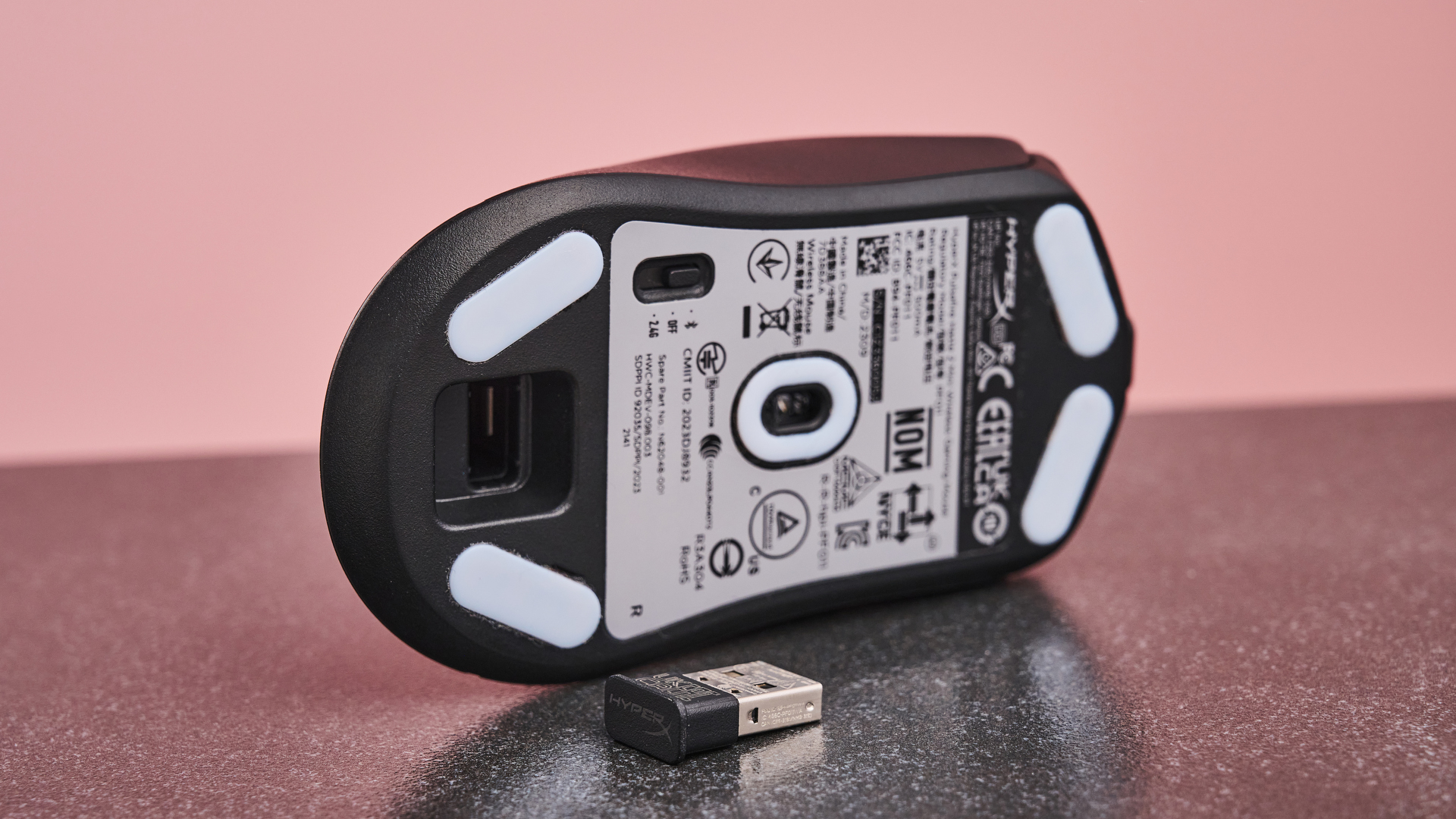
Battery life is a claimed 100 hours, and during my testing, this does appear to hold true. After using the mouse for around three weeks, I didn’t need to recharge it once.
As well as a wireless 2.4GHz dongle, the Pulsefire Haste 2 Mini also has the ability to connect via Bluetooth, handy if you want to switch between two devices quickly by using the selector switch underneath. The connection works well, although be warned that if you do connect via Bluetooth, you won’t be able to use it with the Ngenuity software, so your customization options are limited. You can still cycle through your DPI settings with the DPI button, though.
The Pulsefire Haste 2 Mini can also be used in wired mode while charging. The included USB-C to USB-A cable is very light and malleable, which means there is next to no drag to disrupt the experience.
As a gaming tool, the HyperX Pulsefire Haste 2 Mini is a solid choice, but it ultimately won’t blow you away. It glides excellently and has good ergonomics to offer a secure grip and operation. But the lack of an 8K polling rate will likely irk some potential users, and the clicks are a little too on the heavy side when ultra-quick spamming is called for. This is fast becoming a saturated market, and the fact is there are plenty of high-polling lightweight mice out there from the likes of Razer and other big hitters.
HyperX Pulsefire Haste 2 Mini: Price & availability
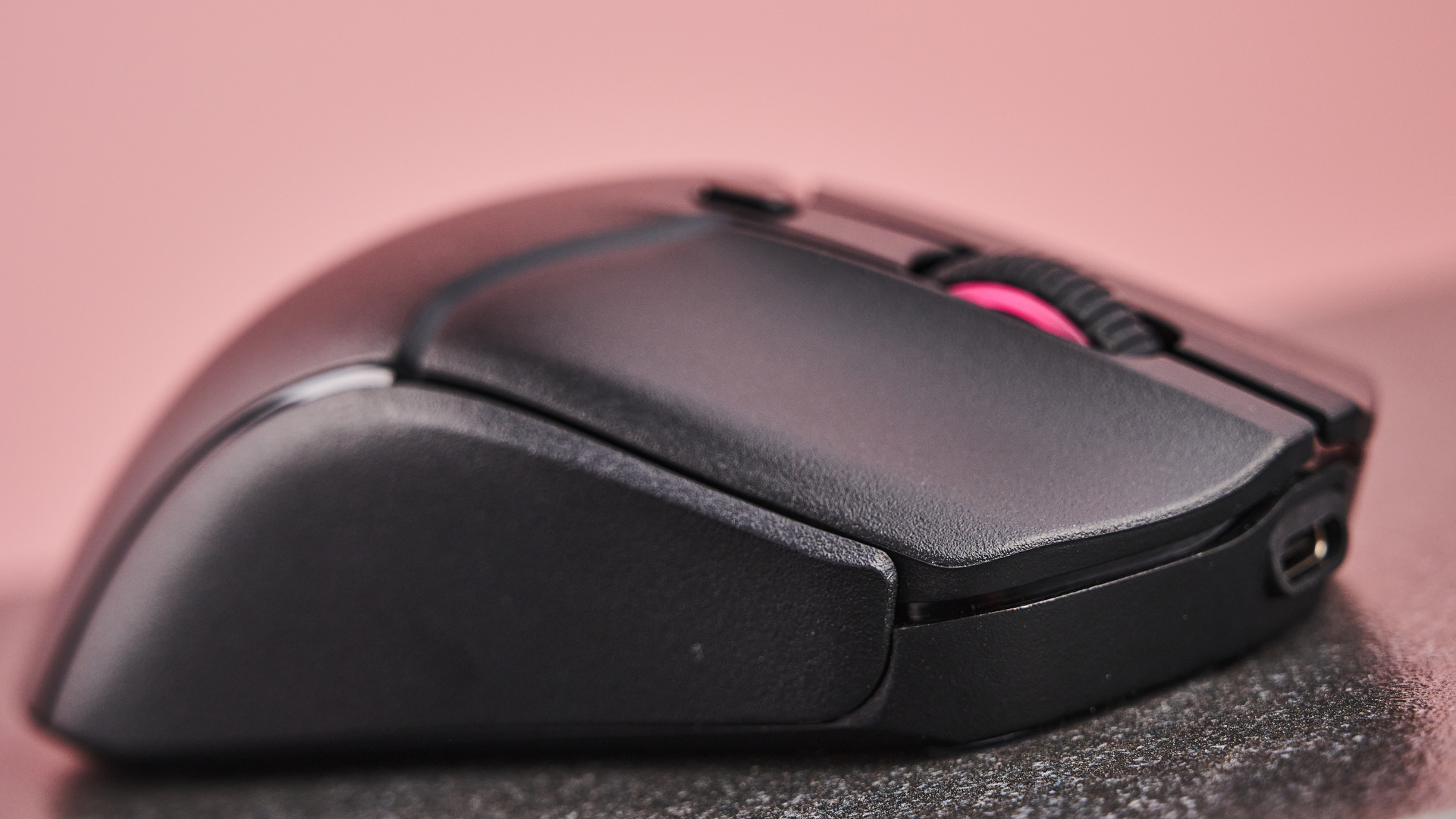
- $79 / £89 / about AU$119
- Available in black or white
- Cheaper than the competition
The Pulsefire Haste 2 Mini is available now for $79 / £89 (about AU$119) and comes in two colorways: black or white. It’s marginally cheaper than its bigger sibling, the Pulsefire Haste 2, which comes in at $89 / £94 / AU$149.
Confusingly, there’s also the Pulsefire Haste 2 Core, which is even less at $49 / £49 / about AU$73. It looks nearly identical to the standard edition, but there are various differences, including a heavier weight (70g), no inbuilt battery (it uses a single AAA instead), and a lower maximum DPI rate of 12,000.
The Pulsefire Haste 2 Mini has a lower price tag than many of its rivals in the lightweight wireless gaming mice market. There are others in this segment that are over £100, but then there’s the Cooler Master MM311, a bargain pick that undercuts many competitors at $39.99 (about £30 / AU$59) while still offering a very competent package. It is heavier at 77g, though.
The Razer DeathAdder V3 Hyperspeed, a similarly lightweight wireless gaming mouse tipping the scales at 55g, is slightly more expensive at $99.99 / £99.99 / AU$179.95, and it’s full-size. However, it can be upgraded to an 8KHz polling rate with the additional Razer HyperPolling wireless dongle, which costs an extra $29.99 / £29.99 / AU$54.95.
If lightness is a priority for you, then the Pulsar X2v2 commands a similar price but weighs less at 52-54g, and it’s also wireless. There’s also the Razer Viper V3 Pro, which is a full-size mouse but still lighter at 54g, although it is considerably more expensive than the Pulsefire Haste 2 Mini. It does have a maximum polling rate of 8KHz, though – an important feature for those who prize smoothness above all else.
HyperX Pulsefire Haste 2 Mini: Specs
| Interface: | Wireless (2.4GHz and Bluetooth 5.1) |
| Ergonomics: | Right-handed symmetrical |
| Buttons: | 6 |
| DPI: | Up to 26,000 |
| Switches: | Custom HyperX Switches |
| Weight: | 2.08oz (59g) |
Should you buy the HyperX Pulsefire Haste 2 Mini?
| Value | The Pulsefire Haste 2 Mini sits somewhere towards the lower end of the market in terms of pricing, but there are lighter mini mice to be had for a similar price. It’s wireless, though, which is good for this price, but the polling rate only reaches 1KHz. | 3.5 / 5 |
| Design | There’s not much to give away the Pulsefire Haste 2 Mini as a gaming mouse based on its looks. The form factor is more ergonomic than that of other mini gaming mice, and the build seems reasonably solid all round. | 4 / 5 |
| Performance | It’s thanks to that ergonomic design that gripping and clicking the Pulsefire Haste 2 Mini is a pleasure for the most part, although clicks are heavier than I would have liked. The lack of customizations options and 8KHz polling rate hurt it. | 3.5 / 5 |
Buy it if...
You want secure mouse clicks
The indented mouse buttons make clicks nice and secure, and the drop-off angle makes them ideal for all claw grippers.
You want good ergonomics
The front slope of the Pulsefire Haste 2 Mini, coupled with the concave design and the aforementioned indented buttons make it feel better in the hand than many other mini gaming mice I’ve used.
You want multiple connectivity options
The Pulsefire Haste 2 Mini allows for both 2.4GHz and Bluetooth wireless connectivity – useful if you want to switch quickly between two devices. And since it comes with an inbuilt battery, you can play and charge simultaneously with the included USB-C to USB-A cable too.
Don't buy it if...
You want a mouse to fill your palms
Unsurprisingly, HyperX specifically aims the Pulsefire Haste 2 Mini at those with smaller hands, so those with a larger palm and want something to fill it won’t be catered for here.
You want a pro-level mouse
With a maximum polling rate of 1KHz, the Pulsefire Haste 2 Mini might not be smooth enough for those who value this aspect above all else.
You want plenty of functionality
As a stripped-back gaming mouse, there aren’t many extras on the Pulsefire Haste 2 Mini. At least the bindable DPI button is on top rather than underneath, as is the case with many other pro-level gaming mice.
HyperX Pulsefire Haste 2 Mini: Also consider
| Header Cell - Column 0 | HyperX Pulsefire Haste 2 Mini | BenQ Zowie EC2-C | Cooler Master MM311 |
|---|---|---|---|
| Price: | $79 / £89 (about AU$119) | $44.99 / £66 / AU$99 | $39 (about £31 / AU$59) |
| Interface: | Wireless (2.4GHz and Bluetooth 5.1) | Wired | 2.4GHz wireless |
| Ergonomics: | Right-handed symmetrical | Right-handed asymmetrical | Right-handed symmetrical |
| Switches: | 6 | 5 | 6 |
| DPI: | 26,000 | 3200 | 10,000 |
| Switches: | Custom HyperX Switches | Not specified | Not specified (mechanical) |
| Weight: | 2.08oz (59g) | 2.58oz (73g) | 2.71oz (77g) |
BenQ Zowie EC2-C
As our number one pick of the best gaming mice for Counter-Strike, where rapid movements are key, the Zowie EC2-C is certainly light enough to fit the bill, weighing in at 73g (excluding the cable). A wireless variant is available too, complete with a handy charging dock, but that model is considerably more expensive.

Cooler Master MM311
This is the mouse to beat in the budget wireless sector. The MM311 offers exceptional value, which is why it made it onto our best gaming mouse guide. It weighs 77g and has no inbuilt battery, but if you can live with those facts then this is a good value choice.
How I tested the HyperX Pulsefire Haste 2 Mini
- Tested for 3 weeks
- Played a variety of games
- 10+ years of PC gaming experience
I used the Pulsefire Haste 2 Mini for around 3 weeks. During that time, I used it for gaming, casual PC use, and productivity.
I played various FPS titles, including the ever-popular Counter-Strike 2 and the open-world Generation Zero. I also played sedate exploration games, including Botany Manor and Dimhaven, both of which are pretty much the antithesis of competitive shooters.
I used it in both the 2.4GHz wireless and Bluetooth modes, as well as wired. I used it on a variety of machines, including desktop and laptop PCs.
First reviewed: July 2024

Lewis Maddison is a Reviews Writer for TechRadar. He previously worked as a Staff Writer for our business section, TechRadar Pro, where he gained experience with productivity-enhancing hardware, ranging from keyboards to standing desks. His area of expertise lies in computer peripherals and audio hardware, having spent over a decade exploring the murky depths of both PC building and music production. He also revels in picking up on the finest details and niggles that ultimately make a big difference to the user experience.
